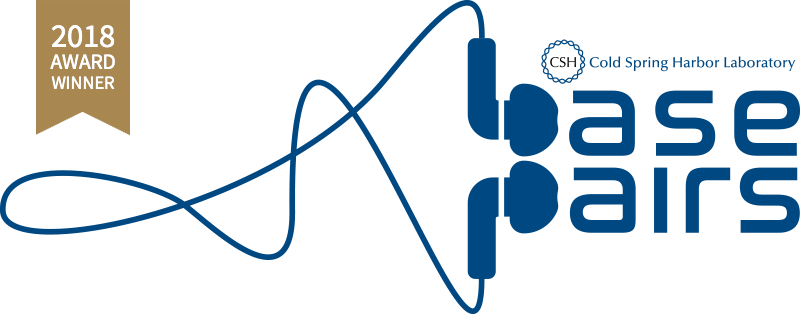
trophy icon 2018 Platinum PR Awards Winner
trophy icon 2018 Webby Award nominee
Cold Spring Harbor Laboratory’s award-winning podcast, Base Pairs, tells stories that convey the power of genetic information—past and present.
Listening to a podcast is easy
Let us show you how in our online tutorial: How to listen to a Base Pairs podcast.
For educators
To make our episodes easier to repurpose for educational uses, including other podcasts, we provide “no music” versions of every episode under a Creative Commons license.
Season 3
Episode 17.5: Special interview with Yaniv Erlich
Transcript
Episode 17: Genomes, justice, and the journey here
Transcript
Episode 16.5: Fuels of the fuels
Transcript
Episode 16: Big plans for a tiny plant
Transcript
Episode 15.5: Cellular hide and seek
Transcript
Episode 15: The immune system unleashed
Transcript
Episode 14.5 – Medicine and Mad Scientists
Transcript
Episode 14 – The Cancer Answer That Wasn’t
Transcript
Season 2
Episode 13: A lesson in class
Transcript
Episode 12.5: Big decisions
Transcript
Episode 12: Good genes, bad science
Transcript
Episode 11.5: What Silicon Valley and biology research share
Transcript
Episode 11: Biology, behind the screens
Transcript
Episode 10.5: Tomato baby and its family
Transcript
Episode 10: CRISPR vs. climate change
Transcript
Episode 9.5: Redefining biologists, redefining genes
Transcript
Episode 9: Dark matter of the genome, part 2
Transcript
Episode 8: Dark matter of the genome, part 1
Transcript
Season 1
Bonus episode: Molecules and a mission
Transcript
Episode 7: The brain atlas
Transcript
Episode 6: When antioxidants are pro-cancer
Transcript
Episode 5: “Sink or swim”
Transcript
Episode 4: The people problem
Transcript
Episode 3: Non-modern family
Transcript
Episode 2: Corn controversy
Transcript
Episode 1: From phages to faces
Transcript